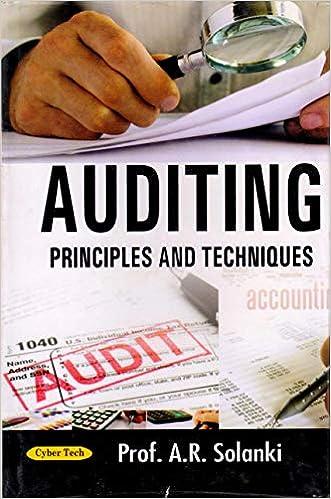Question
In January 2017, the management of Kinzie Company concludes that it has sufficient cash to permit some short-term investments in debt and stock securities. During
In January 2017, the management of Kinzie Company concludes that it has sufficient cash to permit some short-term investments in debt and stock securities. During the year, the following transactions occurred. Feb. 1 Purchased 540 shares of Muninger common stock for $29,700. Mar. 1 Purchased 810 shares of Tatman common stock for $19,440. Apr. 1 Purchased 36 $1,000, 8% Yoakem bonds for $36,000. Interest is payable semiannually on April 1 and October 1. July 1 Received a cash dividend of $0.50 per share on the Muninger common stock. Aug. 1 Sold 180 shares of Muninger common stock at $61 per share. Sept. 1 Received a $2 per share cash dividend on the Tatman common stock. Oct. 1 Received the semiannual interest on the Yoakem bonds. Oct. 1 Sold the Yoakem bonds for $35,000. At December 31, the fair value of the Muninger common stock was $56 per share. The fair value of the Tatman common stock was $23 per share. Collapse question part (a) Journalize the transactions and post to the accounts Debt Investments and Stock Investments. (Use the T-account form.) (Round answers to 0 decimal places, e.g. 5,275. Credit account titles are automatically indented when amount is entered. Do not indent manually. Record journal entries in the order presented in the problem. If no entry is required, select "No entry" for the account titles and enter 0 for the amounts. If the ending balance is 0 select Dec. 31 Bal. for the date and enter 0 for the normal balance for that account.)
Accounts Payable Accounts Receivable Accumulated Depreciation-Buildings Accumulated Depreciation-Equipment Allowance for Doubtful Accounts Bonds Payable Buildings Cash Cash Dividends Common Stock Common Stock Dividends Distributable Cost of Goods Sold Debt Investments Discount on Bonds Payable Dividend Revenue Dividends Payable Equipment Fair Value Adjustment-Available-for-Sale Fair Value Adjustment-Trading Fair Value Adjustment-Non-Trading Gain on Sale of Debt Investments Gain on Sale of Stock Investments Goodwill Income Tax Expense Income Tax Payable Interest Expense Interest Payable Interest Receivable Interest Revenue Inventory Land Loss on Sale of Debt Investments Loss on Sale of Stock Investments No Entry Notes Payable Paid-in Capital in Excess of Par-Common Stock Paid-in Capital in Excess of Par-Preferred Stock Preferred Stock Premium on Bonds Payable Prepaid Insurance Revenue from Stock Investments Stock Dividends Stock Investments Unrealized Gain or Loss-Equity Unrealized Gain on Non-Trading Unrealized Gain-Income Unrealized Loss-Income
Step by Step Solution
There are 3 Steps involved in it
Step: 1

Get Instant Access to Expert-Tailored Solutions
See step-by-step solutions with expert insights and AI powered tools for academic success
Step: 2

Step: 3

Ace Your Homework with AI
Get the answers you need in no time with our AI-driven, step-by-step assistance
Get Started


